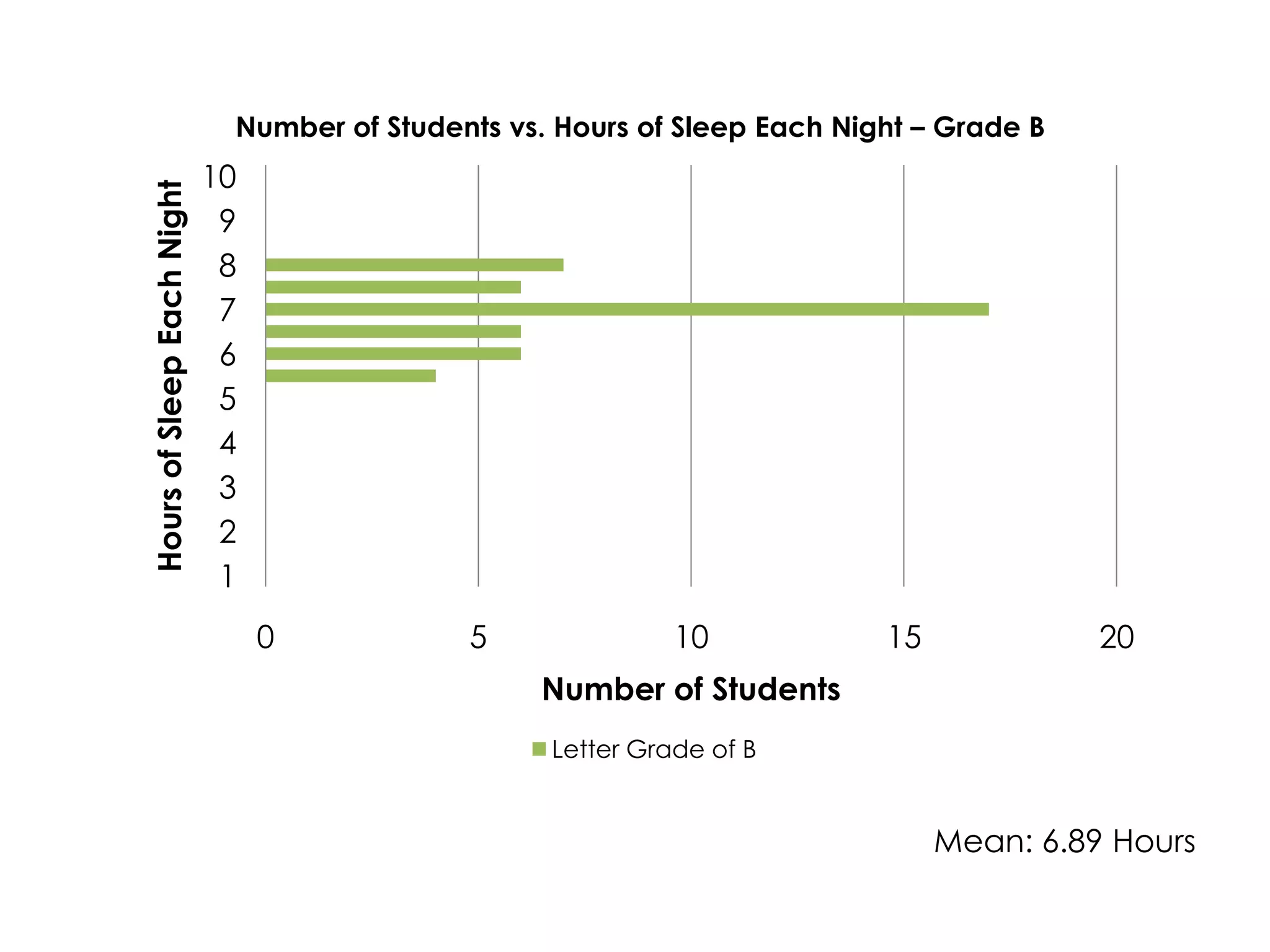The study examined the relationship between sleep and school performance among high school students. Students from 8 randomly selected classes reported their typical nightly sleep hours and most recent quarterly grades. Results showed average sleep decreased as grades declined, from 7.05 hours for an A to 6.5 hours for a C. While the relationship is observational and other factors like academic focus could influence both, the findings suggest less sleep may impact grades. The study could be improved by surveying more schools to account for regional differences and using a prospective design to better track sleep and eliminate recall bias.














